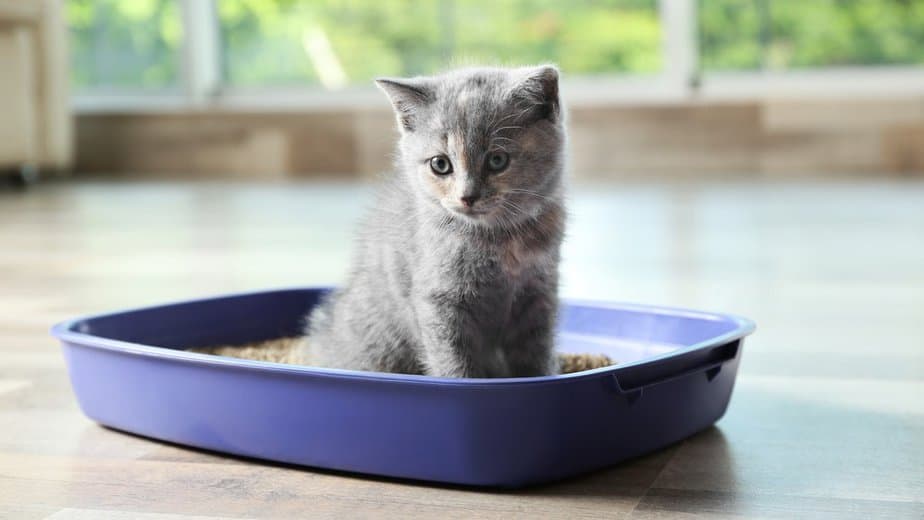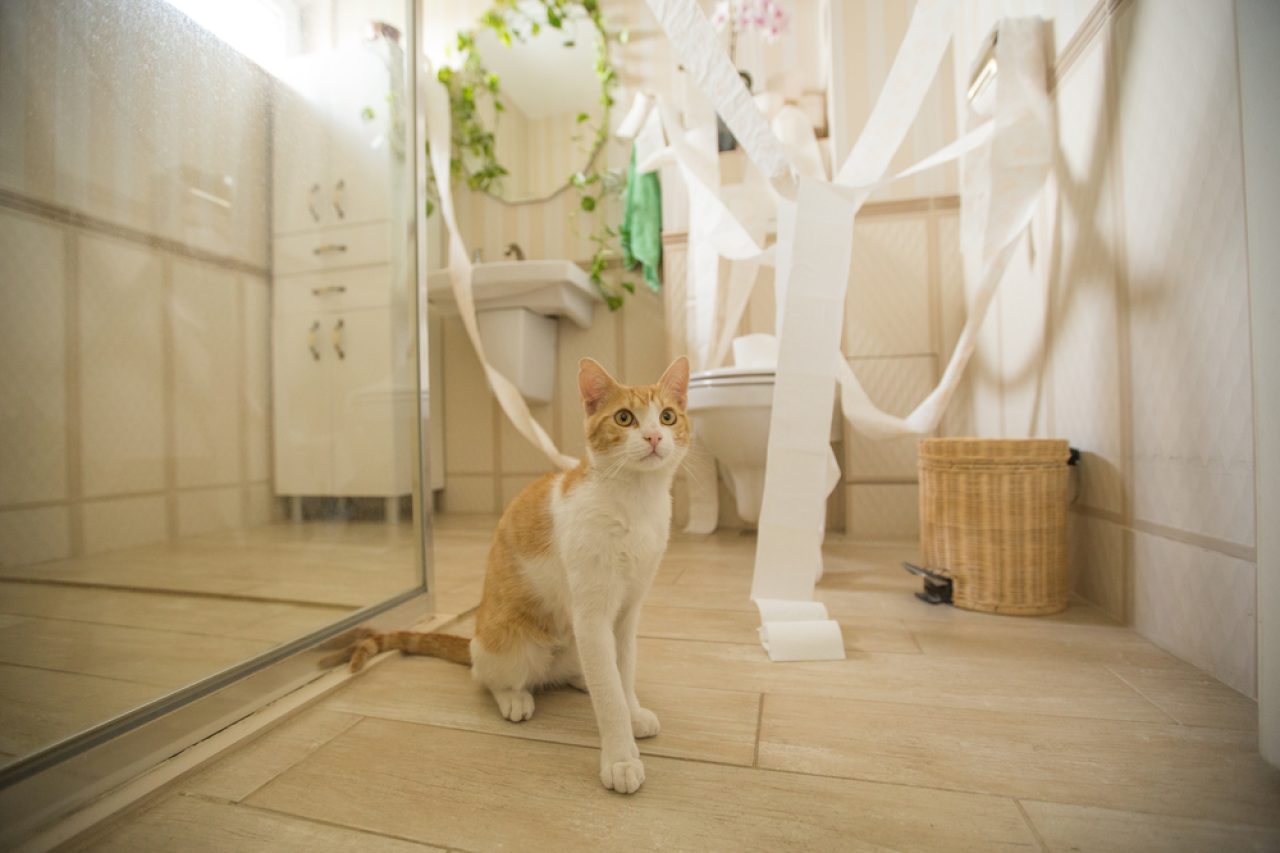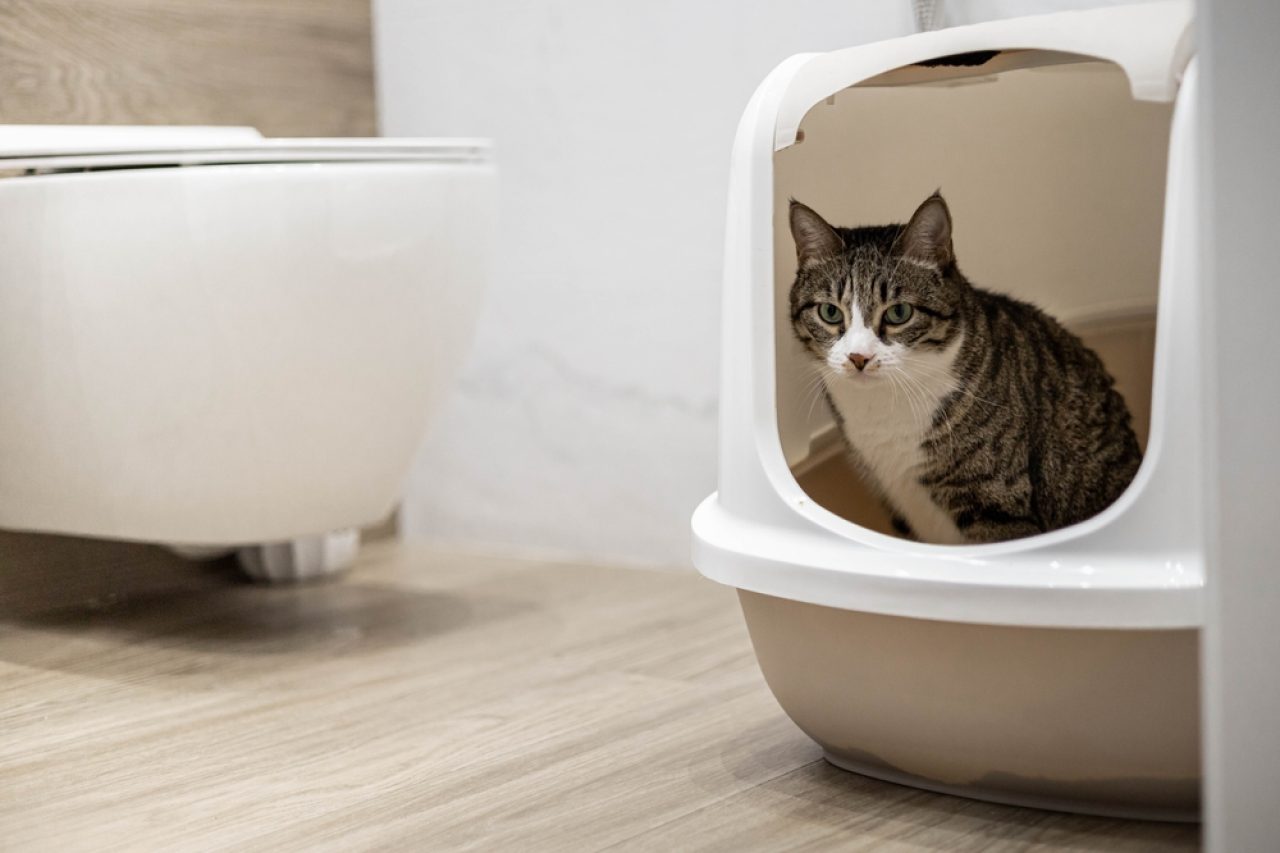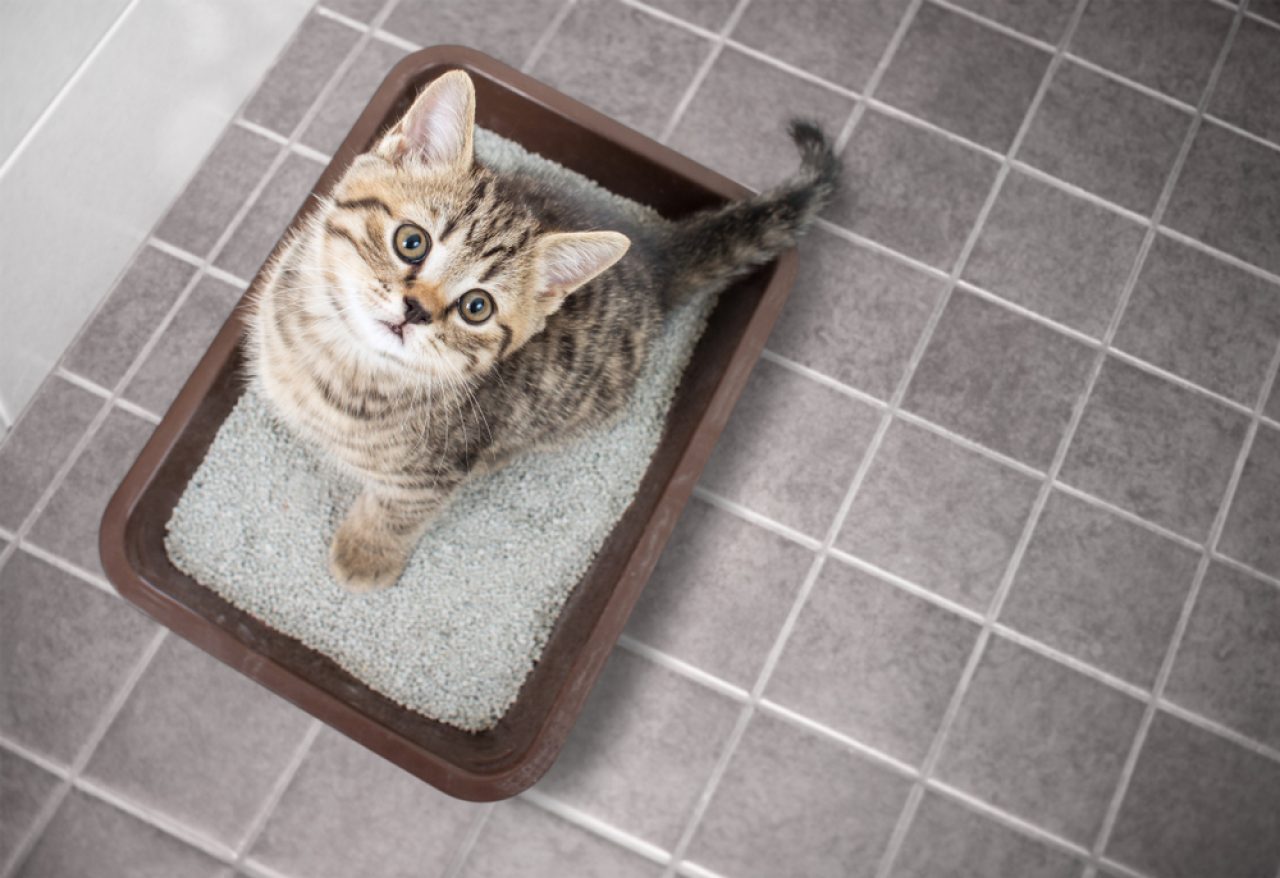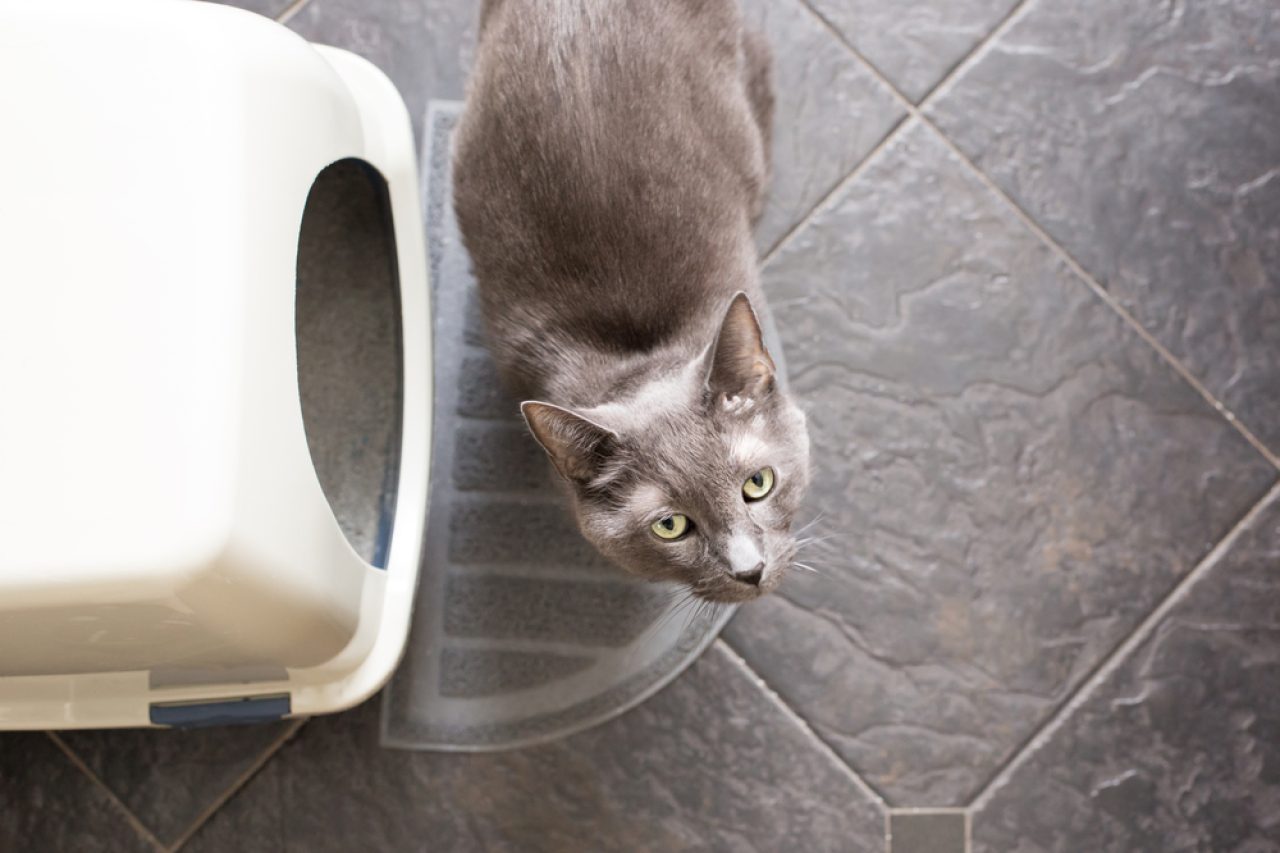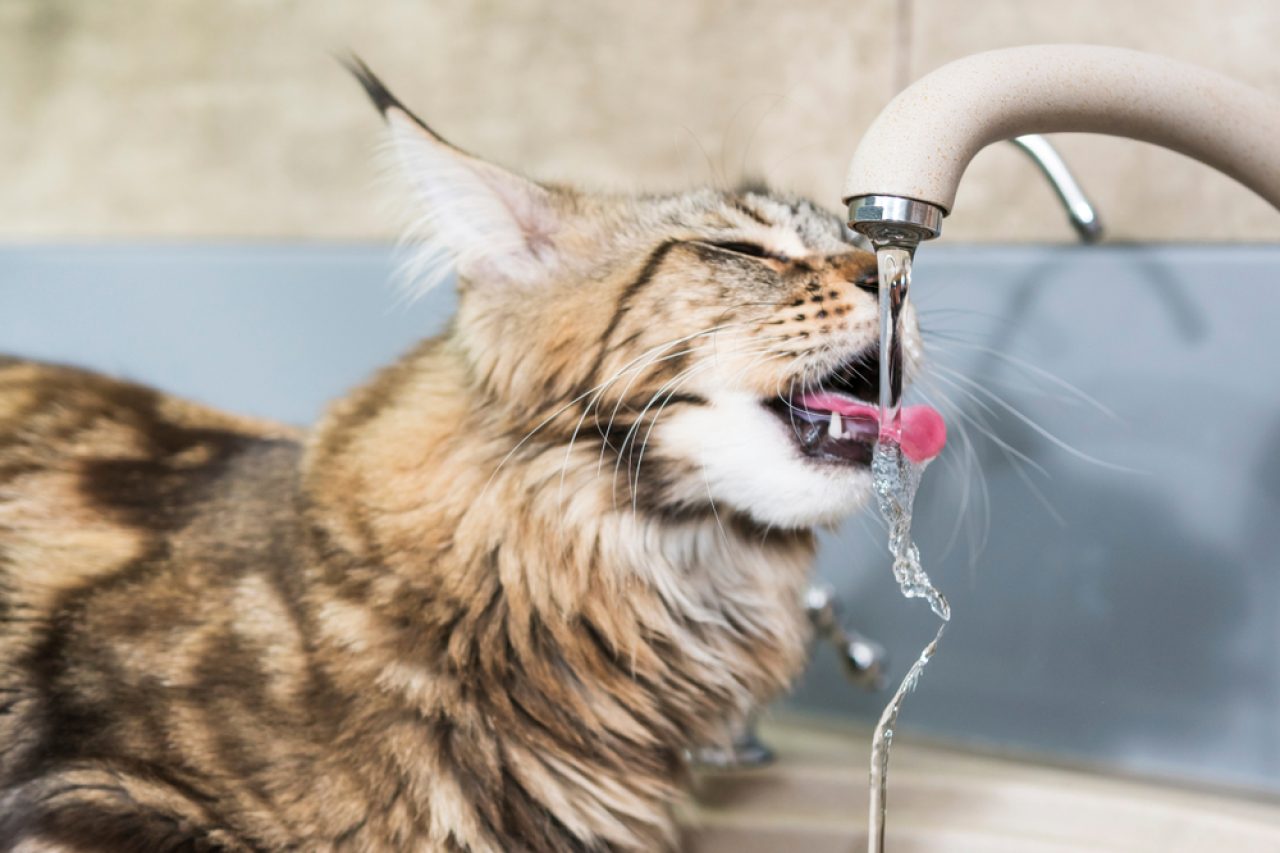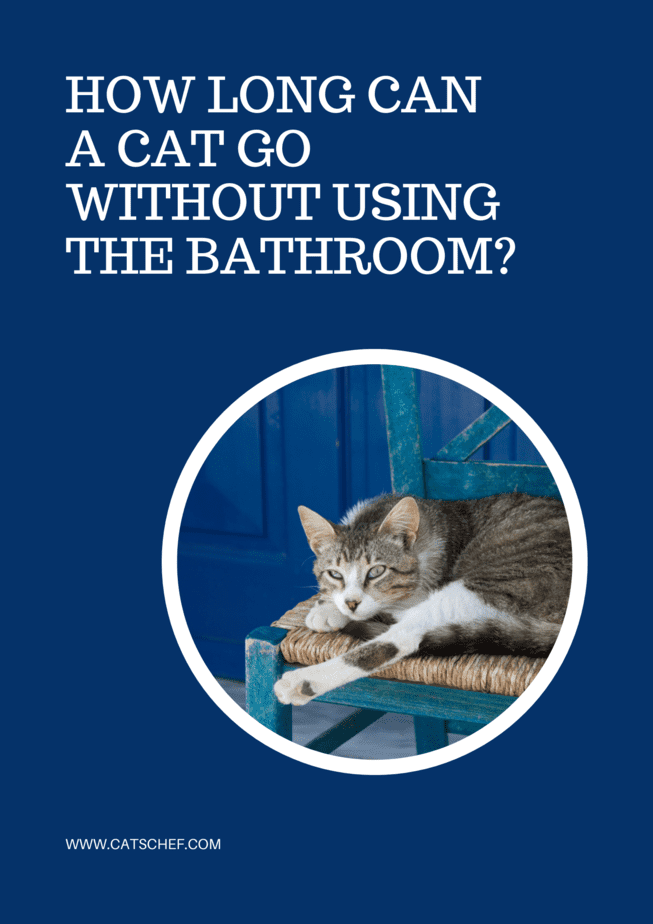📖 Table of Content:
I know you’re thinking the same thing as I am. “How long can a cat go without using the bathroom?” We know felines are superior creatures, but is this really one of their strengths?
Once, I had these exact thoughts cross my mind and it wasn’t out of pure curiosity or boredom. At the time, my pet refused to use her litter box for an entire day.
Usually, she’s already done with her business once I get back home from work. However, I noticed something strange one day – the litter box was empty.
At first, I didn’t give it much thought and considered it to be completely normal, which it usually is. Cats can’t always go to the bathroom, just like humans.
But as time went on, I began to worry because she still hasn’t gone to relieve herself. This is usually the moment in every pet owner’s life when panic starts to kick in.
“Did she eat something? Is she sick? Did she injure herself while I was away?” All of a sudden, there’s a flood of questions in your mind demanding answers you can’t give.
Sometimes, it’s nothing dangerous. Cats can hold it in due to stress, change in environment or food, or because they don’t like the litter.
However, things can also get quite unfortunate. Perhaps there’s a bigger problem behind your pet’s refusal and inability to do her business.
So, how long can a cat go without using the bathroom?
When something like this occurs, it can get you thinking. But one thing that you question the most is how long a cat can go without using the bathroom.
If your feline hasn’t relieved herself for an entire day, this could be the reason for concern. Usually, cats can go without using the bathroom for 24 to 48 hours even if they had drinks and snacks before.
But this doesn’t mean it’s healthy. When a cat’s holding it in, there’s a risk of a toxin buildup in your feline’s system. This is a great danger to her vital organs and it might be fatal if left untreated.
It actually depends on the circumstances, so there’s never a guarantee as to why your pet doesn’t use the bathroom. However, it’s up to us as cat owners to explore that matter.
If you’re a first-time cat parent, you might be oblivious to how your feline’s bladder works. This might leave you confused and overreacting.
You might consider some behaviors to be completely unusual when they’re actually quite normal. Still, if your pet hasn’t used the litter box for an entire day or more, your concerns are justified.
What’s a normal bathroom routine for cats?
Just like humans, our feline companions are unique and have different needs. For instance, I’m the owner of two cats and they’re nothing alike.
One of my pets, Ivy, will use the bathroom throughout the day and especially early in the mornings. On the other hand, Simba will wait up until the quiet hours of the night to do his business in peace.
This wouldn’t be weird if I fed them at separate hours of the day. I give them food, drinks, and snacks at the same time, and yet they have a completely different bathroom schedule.
Therefore, each cat is different so it shouldn’t worry you if your previous pet’s routine doesn’t add up with your new cat’s routine. But are there any hints regarding cats and their schedules?
This is a question that’s probably the biggest burden to owners of young cats. Kittens will have a hard time adjusting to their routine because they’re so little, hence their bladders can’t hold up for long.
I remember when my cats were so small, they used to do their business a couple of times a day. Oh boy, all the mess and litter I had to deal with. But hey, it was all worth it because now they use their bathroom like real champs!
When it comes to adult cats, the bathroom trips minimize down from six to two toilet visits a day. However, it all depends on your cat’s diet, age, as well as her health condition.
For example, your feline may not have the urge to urinate and defecate in winter as much as in summer. During the hot days, she takes in more water than during cold ones, hence the need to urinate more often.
If your pet’s been using the bathroom very often or not enough, you should probably consider taking her to the vet to get her checked out.
How do I know my cat wants to use the bathroom?
Training a cat to use the litterbox is mostly not a problem. It comes to them naturally because even outdoor felines will dig the dirt out and then cover their business.
However, when it comes to indoor felines, things are slightly different. You have to teach them to go into their litter box to prevent any incidents from happening all over the house.
Some pet owners will struggle with litter box training whereas it will be a piece of cake for others. Needless to say, our furry companions are intelligent creatures (even if they act like airheads) and they quickly figure it out on their own.
But how do you know your feline needs to use the bathroom? Are there any signs that would tell you something’s about to go down?
Thankfully, there are some signs that can help you pinpoint when your pet needs to go. For instance, my pets will sniff the ground as if trying to find the exact spot.
Sometimes they even meow as if to tell me “Hey, I need to use the loo.” When they were just kittens, Simba used to hide behind the couch and that was my cue.
Still, this may not apply to all cats. Some felines will perhaps paw or scratch at the ground just like what they do with the litter. And of course, squatting is a final warning and you only have seconds left until the disaster happens.
So all in all, there are a couple of signs that can tell you when your cat’s about to use the bathroom. But make sure she has her litter box available so you avoid any catastrophes.
Will cats go to the bathroom without a litter box?
Unless your feline’s an outdoor cat, she has to have constant access to her litter box. Imagine if you didn’t have your bathroom available at all times; what a nightmare that would be!
However, you might opt for something different, such as toilet training. But I’m pretty sure you understand what’s wrong with this.
Felines are animals that have instincts and one of them is burying and digging out the sand/dirt, or in this case, litter. In the wild, they use this strategy to hide their scent from predators which can ensure their survival.
So if you want to toilet train your pet, be aware of the fact that you’re getting rid of her instincts. Besides, feline feces might contain some bacteria that can be a hazard to the environment once you flush them down.
This might sound weird at first, but with toilet training, you could be flushing some obvious indications of your pet’s health. Most of the time, we’ll notice if there’s something wrong with our cats by inspecting their urine and feces.
If something appears to be out of the ordinary, this could indicate a health problem. So it’s probably best to avoid toilet training and keep the litter box.
The same can be said if you’re planning on training your cat to do her business outdoors. You may not be able to monitor her stool and you could potentially miss out on some important clues.
Moreover, this outside potty training can later turn back to bite you in the face. Imagine it’s raining and your pet just won’t go outside to use the bathroom.
We know cats and rain – and generally speaking, being wet – don’t go well together. So she’d probably choose to hold it in instead of going outside. Then you’ll probably wonder how long can a cat go without using the bathroom and if it’s going to affect her in some way.
4 reasons why your cat is holding it in
If your pet’s litter box has been clean for quite some time now, you might start to wonder if everything’s okay with your feline. Usually, a clear litter box doesn’t have to mean trouble.
On the other hand, it could be a definite sign that there’s something wrong with your cat. There are different illnesses where an inability to use the bathroom can be a symptom.
That’s why you have to keep track of your cat’s bathroom schedule so you can notice any changes and abnormalities in her routine. Who knows, this might save your cat one day!
1. Cystitis
Cystitis is a broad word for inflammation of the urinary bladder. It doesn’t have a definite underlying cause. Lower urinary tract (bladder and urethra) disorders in cats are sometimes combined under the umbrella term feline lower urinary tract disease (FLUTD).
This is due to the difficulty in distinguishing between various illnesses of the bladder and urethra, and many disorders impact the whole lower urinary system.
One of the symptoms of this feline illness is the inability to urinate. You may notice your pet having a hard time using the bathroom and straining a lot.
Also, it could also be a case of frequent urinating with small quantities of urine. Your cat will probably do her business in unusual places and outside of her litter box.
Besides, her urine and feces will have a foul smell and traces of blood in them. If you notice any of these symptoms and your cat has trouble going to the bathroom, make sure to visit the veterinarian right away.
2. Stress
There are different kinds of stress and all of them will impact your cat in a unique way. Not every feline is the same, so you may notice different signs of stress if you have more than one cat.
My cats will definitely go without using the bathroom if they’re feeling under the weather. Both of them did it when they were younger, especially when they were little kittens.
For instance, Ivy was the first cat to arrive in my home and she took it rather well. But it’s a whole other story with my other pet, Simba.
He was stressed because of the change in environment and that totally affected his bathroom schedule. Instead of peeing up to six times a day as every kitten would, he would visit the bathroom once or twice a day.
I didn’t think it could get worse until it started to reflect on Ivy. She became stressed because of the new pet – Simba! I never thought a kitten so small could give her that much trouble and that a new pet can be the reason my cat refuses to use the bathroom!
So, if you moved recently or adopted a new pet into your household, it could be the reason why your pet’s unable to go to the bathroom. Felines are delicate creatures, so any change can easily startle them.
3. Injury
It’s no secret that cats are active animals. That is unless they’re sleeping. This is especially true for kittens who are full of life and energy.
If your pet’s a rambunctious one, she might be jumping up and down all day long. It’s all fun and games until she hurts herself.
Unfortunately, injuries can happen and they may have some consequences. Your furry cat might have trouble urinating if she damaged her bladder so she might not visit the bathroom as regularly or at all.
4. Dehydration
One of the most common causes of constipation in cats is dehydration. When water is removed from the large intestine to hydrate the body, the colon can become dehydrated.
If the body doesn’t have enough water, the stool becomes hard, dry, and considerably more difficult to travel through the colon.
So, if your pet’s been having trouble lately with using the bathroom, you might want to encourage her to drink more water. I know that cats aren’t fond of it, but try different methods such as water fountains or some treats with lots of water. Hopefully, you’ll find something that works for her.
